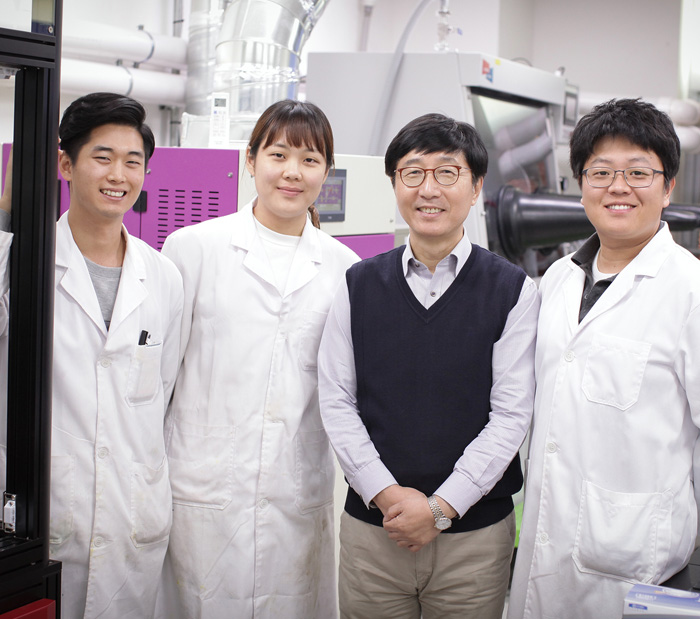Research Stories
Development of X-ray Material with Almost No Radiation Using Microcrystalline Halide Perovskites
A semiconductor material that can reduce the amount of radiation exposure while taking medical X-ray images to less than 1/10 has been developed.
Chemical Engineering
Prof.
PARK, NAM-GYU
A collaborative research project with Samsung Electronics
A semiconductor material that can reduce the amount of radiation exposure while taking medical X-ray images to less than 1/10 has been developed.
On the 11th, it was announced that an ‘X-ray detector’ that can increase sensitivity by over 20 times more than conventional flat X-rays by using perovskites semiconductor material was developed.
An X-ray detector is a kind of image sensor that absorbs X-rays. The new material developed by the research team has high sensitivity, so it is possible to obtain a clear medical image while reducing the radiation dose. The cost of production is also low. Unlike conventional detectors, which are made by vacuum processing used in semiconductor manufacturing, the new detector can be made through a liquid process, so a large screen can be made. If this technology is commercialized, it will be possible to make X-ray devices that can take an image of the whole body at once. Perovskite has excellent characteristics of converting light into an electric current, so it is a material that is very popular in the fields of solar cells and X-rays.
X-ray devices are widely used for medical purposes because they can convert X-rays transmitted through the human body into pictures and images, but they are expensive and result in large doses of radiation. For this reason, research and development projects to reduce X-ray exposure are being widely carried out in the United States, European Union, etc.
The research team expects that X-ray devices that can dramatically reduce X-ray exposure will be developed in a few years. If the remaining technical problems are improved, X-ray medical imaging technology that reduces the radiation dose to less than 1/10 is expected to be available in the practical field of medicine.
The results of this research have been published in the online edition of the worldwide scientific journal Nature, titled "Printable organometallic perovskite enables large-area, low-dose X-ray imaging."

